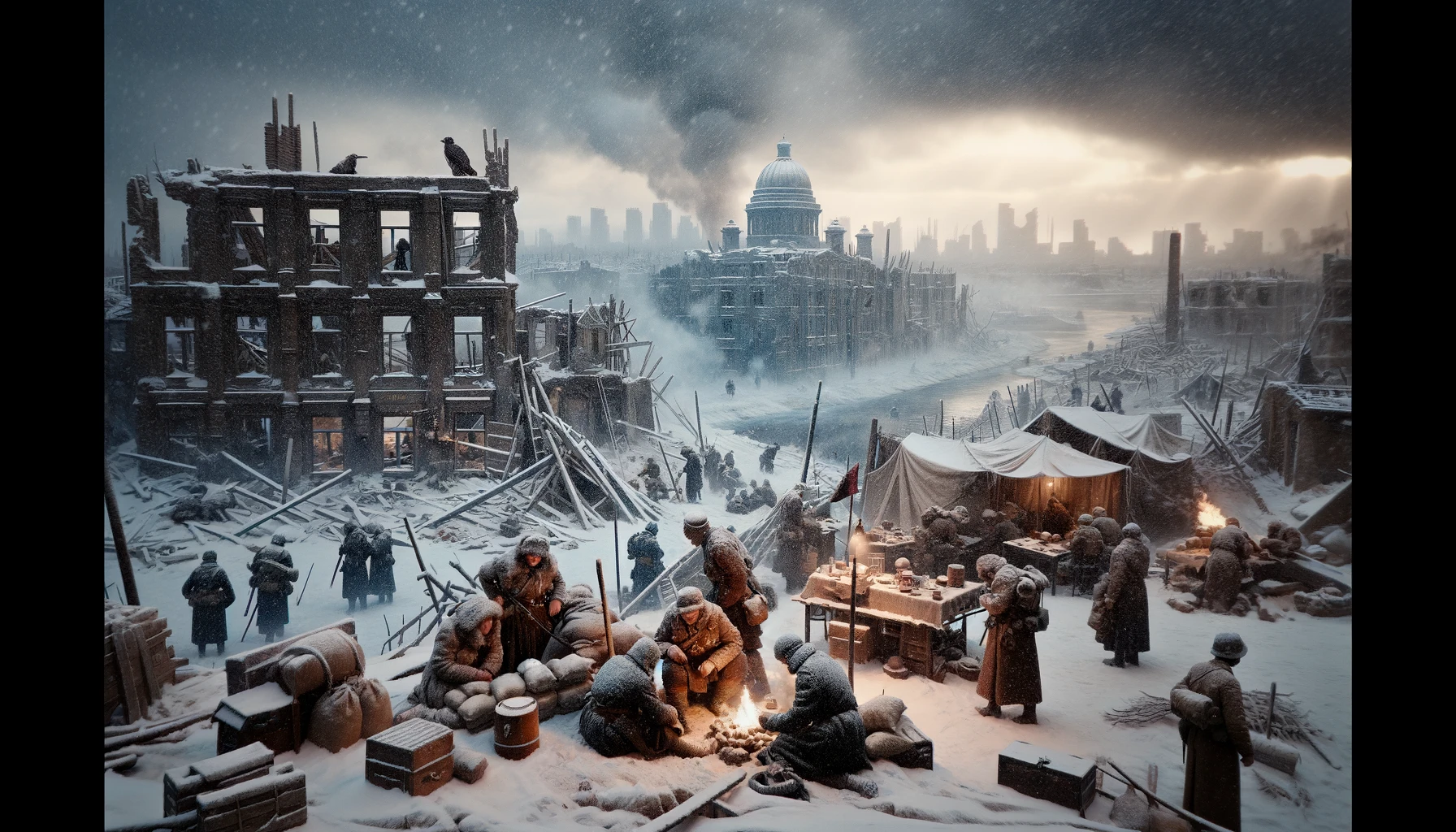On This Day 27 January 2024 Saturday
On this day, January 27, have a quick look at the panchang, festivals and history of India and world and India’s freedom struggle,
Sam Vikram: 2080 Purnimanta Mass: Magha Paksha: Krishan / कृष्ण Tithi: Dwitiya upto 27:38
 Panchang / पंचांग
Panchang / पंचांग
Virram Samvat / विरम संवत: 2080
Shaka Samvat / शक संवत: 1945
Amanta Month / अमान्त मास: Paush / पौष
Purnimanta / पूर्णिमांत: Magha
Tithi / तिथि: Dwitiya upto 27:38
Paksha / पक्ष: Krishan / कृष्ण
Today/ आज
Festivals Today:
Festials Tomorrow:
Day Today: International Day of Commemoration in Memory of the Victims of the Holocaust (A/RES/60/7)
Day Tomorrow:
Yoga / योग: Ayushman upto 08:07
First Karana / प्रथम करण: Taitila / तैतिल (तक) upto 14:27
Second Karana / द्वितीय करण: Gara / गर (तक) upto 27:38
Sunrise / सूर्योदय: 7:16
Sunset / सूर्यास्त: 17:51
Moonrise / चंद्रोदय: 19:23
Moonset / चंद्रास्त: 8:21
Sun Sign / कुण्डली: Makara
Moon Sign / राशि: Karka
 Auspicious Time / शुभ समय
Auspicious Time / शुभ समय
Abhijit / अभिजीत: 12:12 − 12:54
Amrit Kaal / अमृत काल: 11:12 − 12:59
 Inauspicious Time / अशुभ समय
Inauspicious Time / अशुभ समय
Gulikai Kalam / गुलिकाई कलाम: 07:16 − 08:35
Yamaganda / यमगंडा: 13:53 − 15:12
Dur Muhurtam / दुर्मुहूर्तम्: 00:34 − 00:36
Rahu Kaal / राहु काल: 09:54 − 11:14
Varjyam Kaal / वर्ज्यम् काल: None
Today / आज
Freedom Fighters sacrificed / राष्ट्रवादियों ने बलिदान दिया था At Least/ कम से कम:
Major Historical Events / प्रमुख ऐतिहासिक घटनाएँ
1973: The Vietnam War came to a close as representatives from North Vietnam and the United States signed the Paris Peace Accords. Under this agreement, the U.S. committed to withdrawing all remaining troops within 60 days, marking the conclusion of the longest war in American history. The conflict had inflicted a heavy toll, with over 58,000 American fatalities, 300,000 wounded soldiers, and 2,500 declared missing. Additionally, 566 prisoners-of-war had been held by North Vietnam, resulting in 55 reported deaths.
Historical Events in Brief / ऐतिहासिक घटनाएँ संक्षेप में
1. Transition of Power in Jaipur State: The End of Bharmal’s Reign and the Beginning of Bhagwant Das’s Leadership on January 27, 1574
On January 27, 1574, a significant transition occurred in the leadership of Jaipur State, a prominent princely state in India. This date marks both the end of the reign of Bharmal and the beginning of the reign of Bhagwant Das.
Reign of Bharmal
Bharmal, who had been the ruler of Jaipur State, saw the end of his reign on this day. His leadership was a period of considerable importance in the history of Jaipur. Bharmal is often remembered for his strategic alliance with the Mughal Empire, which was a defining moment in the region’s history. This alliance was cemented through the marriage of his daughter, Mariam-uz-Zamani, to the Mughal Emperor Akbar in 1562. This marriage was a significant event, as it led to a strong relationship between the Mughal Empire and the Rajput states, including Jaipur.
Ascension of Bhagwant Das
The same day marked the beginning of Bhagwant Das’s reign. Bhagwant Das, a son of Bharmal, is known for his role as a statesman and warrior. He continued the policies of his father, maintaining and strengthening the alliance with the Mughals. His diplomatic skills and valor in battles were highly regarded. Bhagwant Das served under Emperor Akbar and was honored for his contributions to the Mughal court. He played a crucial role in expanding the Mughal influence in the region and was instrumental in several military campaigns.
Significance of the Transition
This transition in the leadership of Jaipur State was more than just a change of rulers. It represented the continuation of a policy of alliance and cooperation with the Mughal Empire, which had significant implications for the region’s political and cultural landscape. The reigns of Bharmal and Bhagwant Das were pivotal in shaping the history of Jaipur, influencing its politics, culture, and relations with one of the most powerful empires of the time.
This change of reign on January 27, 1574, thus stands as a noteworthy event in the history of Jaipur, marking the end of one significant era and the beginning of another under the leadership of Bhagwant Das
Humayun’s Conversion and Death – January 27, 1556
- Event: Conversion of Humayun from Sunni Islam to Shia Islam and his Death.
- Context: On January 27, 1556, the Mughal Emperor Humayun reportedly converted from Sunni Islam to Shia Islam. This conversion was a strategic move to secure an alliance with the Shah of Persia, a Shia Islam stronghold.
- Significance: Humayun’s conversion was a part of his larger strategy to strengthen his position in the Indian subcontinent, which was often characterized by political maneuvers involving various regional and foreign powers.
- Succession: On the same day, Humayun met with an untimely death. Following this, his son Akbar ascended the throne, eventually becoming one of the greatest emperors in Indian history. Akbar’s reign marked significant cultural, political, and religious transformations in the Mughal Empire.
January 2003 Mumbai Bombing – On This Day, January 27 in 2003
- Event: Terrorist Attack in Mumbai.
- Date: January 27, 2003.
- Location: Mumbai, India.
- Incident: The city of Mumbai faced a devastating terrorist attack in the form of a bombing.
- Casualties: The attack resulted in the tragic loss of 1 life and left 28 others injured.
- Impact: The bombing was part of a series of terrorist incidents that plagued India during this period, contributing to a heightened sense of insecurity and tension both within the nation and in its relations with neighboring countries.
- Response: Following the attack, there were significant efforts by Indian security agencies to enhance counter-terrorism measures and improve intelligence to prevent such incidents in the future.
Both events, though centuries apart, reflect critical moments in Indian history — one marking a significant shift in the Mughal Empire’s leadership and religious dynamics, and the other representing the challenges of modern terrorism faced by India in the 21st century.
Anniversary On This Day
- Ole Einar Bjørndalen (Born January 27, 1974) – A renowned biathlete and coach from Drammen, Norway, Ole Einar Bjørndalen is celebrated for his exceptional achievements in biathlon, a sport that combines cross-country skiing and rifle shooting.
- Bobby Deol (Born January 27, 1967) – Bobby Deol, a prominent figure in Indian cinema, has made significant contributions to the film industry, known for his diverse roles and impactful performances.
- Vikram Bhatt (Born January 27, 1967) – Vikram Bhatt, an influential figure in Indian cinema, has left a lasting impact through his work as a director, producer, and screenwriter.
- Shreyas Talpade (Born January 27, 1976) – An actor known for his versatility, Shreyas Talpade has made a mark in the Indian film industry with his engaging performances in various genres.
- Deepshikha (Born January 27, 1977) – Deepshikha, a notable actress in Indian cinema, is recognized for her dynamic acting skills and contributions to the film industry.
- Sameer Dattani (Born January 27, 1982) – Sameer Dattani has earned recognition in the Indian film industry, showcasing his talent through a range of compelling performances.
- Shehnaaz Gill (Born January 27, 2000) – Shehnaaz Gill, a rising star in the entertainment industry, has captured the hearts of many with her charismatic personality and talent.
- Bhavabhushan Mitra (Born January 27, 1970) – A notable freedom activist, Bhavabhushan Mitra’s contributions to the struggle for independence are remembered and honored.
- Cris Collinsworth (Born January 27, 1959) – A celebrated sportscaster and former American football player from Dayton, Ohio, USA, Cris Collinsworth is known for his insightful commentary and deep understanding of the game.
- André the Giant (Born January 27, 1993) – André the Giant, a legendary figure in WWE wrestling, is remembered for his extraordinary size and strength, as well as his larger-than-life persona in and out of the ring.
Freedom Fighters’ sacrifice / राष्ट्रवादियों के बलिदान
On This Day, January 27: Struggle for Independence in India
The history of India’s struggle for independence is a saga of bravery, sacrifice, and unwavering commitment to the cause of freedom. The events of January 27 across different years mark significant contributions of various individuals to this struggle. This essay aims to shed light on these events and the individuals who played a pivotal role in shaping India’s fight against colonial rule.
The Akali Movement and Niranjan Singh
On This Day, January 27, 1924, Niranjan Singh from Nahsera, Gurdaspur in Punjab, was arrested during the Akali movement, a significant phase in the Sikh community’s struggle for freedom. Actively involved in the Bhai-Pheruka Morcha, Niranjan Singh later joined the 10th peaceful Shahidi Jatha to Jaito Gurdwara Gangsar in 1925. This was a protest against the British prohibition of prayer assemblies. He was arrested and faced brutal torture, ultimately leading to his martyrdom in Nabha Bir Jail at the age of 40.
On This Day in The Uprising of 1857 and the Heroics of Jalla and Noor Surey
The Uprising of 1857, a seminal event in India’s freedom struggle, saw the valor of many unsung heroes. Among them were Jalla and Noor Surey. Jalla, from Bombay Presidency, actively supplied arms and encouraged attacks on British properties. Captured on January 27, 1858, he was sentenced to ten years of rigorous imprisonment and transported to the Andaman Islands, where he died on June 24, 1859.
Similarly, Noor Surey also joined the rebel forces during the 1857 uprising. Captured and tried for aiding the rebellion, he was sentenced to 14 years of imprisonment on January 27, 1858, and later died in captivity in the Andamans on May 11, 1859.
Jatindra Nath Mukherji: A Symbol of Resistance
Jatindra Nath Mukherji, also known as Bagha Jatin, was a remarkable figure in the freedom struggle. Arrested on January 27, 1910, for his involvement in the Howrah Conspiracy Case, Jatin was a fearless leader and an inspiration for many. His audacious acts, including the assassination of Nirode Haldar and his involvement in various armed struggles against British rule, marked him as a prominent figure in the history of Indian resistance.
The Civil Disobedience Movement of 1930 and the Martyrs of January 27, 1931
The Civil Disobedience Movement saw a surge of nationalistic fervor across India. On January 27, 1931, several participants of this movement became martyrs. Ram Chandra Prasad Singh, Chandra Shekhar Singh, Chathu Singh, Sosan Singh, and Tiloki Kantaha were part of a Congress procession in Begusarai, Bihar, celebrating Independence Day. The sudden declaration of the procession as unlawful led to clashes with the police, resulting in the tragic deaths of these brave souls.
Guru Kotia and the “Quit India” Agitation
In the midst of the “Quit India” agitation on August 8, 1942, Guru Kotia from Orissa actively participated in the movement. Arrested and subjected to dire conditions in jail, he was later admitted to the hospital on January 27, 1944, for cerebral malaria. His death on January 31, 1944, due to heart failure, was a direct consequence of the inhumane conditions in the prison.
Reflections on Society and the End of an Era
The completion of Baburnama by Babur, reflecting on various aspects of society, politics, and nature, represents the end of an era and the beginning of a new chapter in Indian history. Following Babur’s death, his son Humayun succeeded him, marking a transition in the Mughal Empire that would later play a crucial role in India’s history.
In conclusion, the events of January 27 across different years in the history of India’s freedom struggle encapsulate the essence of sacrifice and heroism. These individuals, from various walks of life and regions, contributed significantly to the collective effort to free India from colonial rule. Their stories are not just historical accounts but are beacons of inspiration, reminding us of the price paid for the freedom we enjoy today
Feature Image: Siege of Leningrad. The image portrays a poignant scene from the Siege of Leningrad during World War II. It’s set in a snowy, winter landscape, emphasizing the harsh conditions of the siege. In the background, you can see the city of Leningrad, with its buildings bearing signs of damage and destruction, hinting at the severity of the conflict.
In the foreground, the focus is on the people enduring these tough conditions. There are citizens and soldiers, capturing the collective struggle of both civilians and the military during this time. Some individuals are gathered around a small fire, seeking warmth in the bitter cold, while others are busy with activities essential for survival and resilience, such as moving supplies or aiding the wounded.
The overall atmosphere is somber and evocative, emphasized by the overcast sky and falling snowflakes. This visual narrative powerfully conveys a sense of perseverance and endurance amidst adversity. (Click here to view the image) [Credit: https://www.wikipedia.org ]

I?¦ve been exploring for a little for any high-quality articles or weblog posts in this sort of house . Exploring in Yahoo I finally stumbled upon this web site. Studying this information So i?¦m glad to show that I have a very excellent uncanny feeling I found out exactly what I needed. I so much certainly will make certain to don?¦t disregard this web site and give it a glance on a constant basis.
Do you mind if I quote a few of your articles as long as I provide credit and sources back to your webpage? My website is in the exact same area of interest as yours and my users would certainly benefit from a lot of the information you present here. Please let me know if this ok with you. Thanks!
Hi Val Strawther
Please do quote if you like
I will be happy if you do that as long as you give credit to the quote.